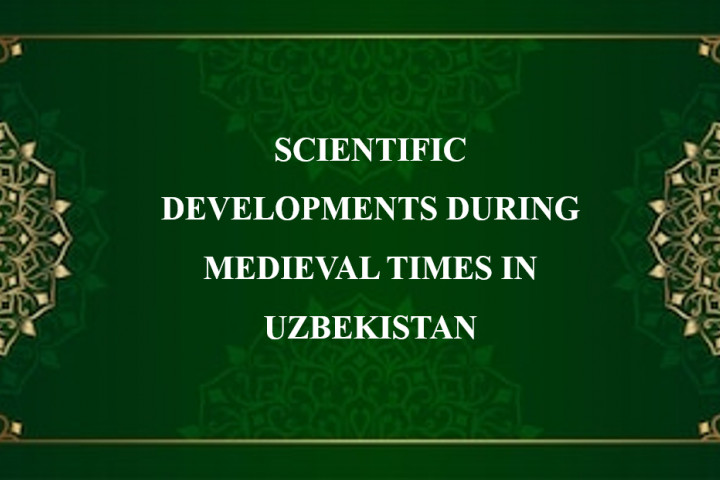
SCIENTIFIC DEVELOPMENTS DURING MEDIEVAL TIMES IN UZBEKISTAN
The independence of Central Asian countries from the USSR at the beginning of the last decade of the 20th century has been a unique event. There has been worldwide attention to the affairs of these countries. It has brought tremendous changes in geopolitical and environment of the region. This has occurred in an area where Islam and Muslim have a long history. It has during the Smanid period, however, that Islam and Muslims achieved a dominant position in the region, a position that was to last until the October Revolution.
Within three decades of independence, Uzbekistan proved tremendous successful in all the fields. The ancient caravan routes are located in the territory of Uzbekistan that includes Tashkent, Samarqand, Bukhara Termez, Ferghana, Urgench and Khiva. This historically significant cities presented many eminent personalities to the world. Even that Uzbekistan has preserved the rare copy of the Holy Quran written by Hazrat Usman known as Mashaf-i-Usman.
Today Uzbekistan is one of the oldest and well-established regions in Central Asia. The regionʼs location and its own capabilities have contributed to this competition. Uzbekistan was so fertile due to its prosperity; the region constant attracted the outsider. The region was an important centre for intellectual life and religion until the first century. The dominated religion in the region was Zoriastrianism, later on Buddhism; Christianity and Islam. Termez, Samarqand, Bukhara and other cities became one of the leading centres for learning, and it was the home for renowned historian, Scientist, philosopher and theologian. During the Soviet period the situation had changed radically. But after the disintegration of the Soviet Union, the revivalism has started in Uzbekistan. They are also motivated by a desire to re-establish their links with their past.
Islam came to this region in 8th century with beliefs and new way of life. The people o Central Asian region got a new opportunity for freedom, and the Samanid state was founded in Bukhara. A new cultural revival of the Central Asian people started under the patronage of the Samanids in Bukhara and Samarqand. Central Asia produced some of the greatest Muhadith, Scientists, geographers and historians, who took a keen interest in Greek Sciences and philosophy. Even the Arabs acquainted with them and benefitted their works, Ibn Fadlan mentioned in his chronicles about Russia, Kazakhstan and Uzbekistan in 922AD.
The land of Uzbekistan was known as a cradle of the intellectual and political centre of human development, where Alexander came, married with local girl named as Ruxana and settled in Marcanda (now-a-days Uzbekistan).The early medieval Eastʼs greatest personalities of this region gave rise to sciences, mathematics, astronomy, physics, chemistry, pharmacology, medicine, as well as history, philosophy and literature. Thus, the biggest achievement of the period of independence has been to return to the people the memory of such outstanding historical figures as Muhammad ibn Musa al-Khwarizmi (780-850), Ahmad al-Farghani (797-865), Abdullah Muhammad ibn Ismail al-Bukhari (810-870),Abu Isa Muhammad al-Termizi (824-892), Abu Mansur al-Maturidi (853-944), Abu Rehan al-Beruni (973-1048), Abu Ali ibn Sina (980-1037), Abdukhalik Gijduvani (1103- 1179), Abu al-Qasim Mahmud ibn Umar al-Zamakhshari (1075-1144), Najmiddin Kubro (1145-1221), Burhanuddin al-Marghilani (1152-1197), Bahauddin an-Naqshbandi (1318- 1389), Khoja Ahrar (1404-1490) and so forth, all whom made invaluable contribution to the treasure-house of world culture and human spirituality. As a key aspect the country demonstrates its soft power through tangible and intangible cultural heritage.
Ibn-Sina wrote several books on medicine and philosophy. Among his medical works is the famous canon of medical science which had been translated into Latin in the 12th Century and used by physicians in the East and West. Muhammed Ibn Musa al-Khwarezmi is considered as a father of Algebra, and the title of his work known as al-Djabr. He was not only a mathematician but also an astronomer, geographer and historian. His works represent a synthesis of Indian algebra and Greek geometry which forms the basis of modern mathematical science. Al-Khwarezmi made use of centuries old Khwarezmian traditions of mathematics, mostly influenced by Indian and Greek cultures, which had arisen on the basis of such practical needs as irrigation, travel, trade and construction.
The various ethnic communities in Central Asian region enjoyed Perso-Arabic traditions based on the fundamentals of Arabic religious literature and adab, and development through diplomatic Persian insha. The Turkish language, literature and customs gradually gaining equal popularity. In the 10th century Persian literature, poetry and prose appeared with Arabic script in the entire region. Turkish steppes traditions such as Dede Korkurt, orally recited since the 9th -11th centuries reflecting the traditions, way of life and customs of the people. The Great Russian orientalist V.V.Barthold has extensively mentioned in his works about the establishment of Arabs and the influence of Arabic language. Mehmud al-Kashghari has written his Diwan Lughat al-Turk in Arabic language. These five Diwans such as Hayratul-Abrar, Farhad wa Shirin, Layla wa Majnun, Sabʼai Sayyor, Saddi Iskandari written by Ali Sher Navoi for the establishment of Chagatai language and literature on different issues. Several manuscripts such as Khamse, Lajjat al-Anwar Manatiq al-Tair, Khazain al-Maani, and Mahbub al-Qulub were produced in Arabic. Khowarezmiʼs famous Muhabbatnama composed in Persian-Tajik language. The literary tradition was continued till 17th century; Muhammad Yaqub Zingi compiled an Uzbek-Persian /Tajik dictionary.
Ahmad al-Farghani (797-865) known as Alfraganus to Western world, whichʼs great work Elements of Astronomy contains evidence for spherical form of the Earth and the data on the planetʼs size, which induced Columbus, Magellan and other travellers to make geographical discoveries. His works are scattered in various museums throughout the world, in Russia, Netherlands, Great Britain, Tunisia, France, etc. In 1998, with the initiative of Islam Karimov and UNESCOʻs cooperation, Uzbekistan widely celebrated the 1200th birthday of Ahmad al-Farghani. The Government of Uzbekistan erected monuments to his memory in Tashkent and Ferghana. In 1998, Jamia Millia Islamia with the help of Uzbekistan Embassy in Delhi organized a seminar on al- Farghani. In 2007, when the Islam Karimov was in Egypt on official visit, a monument to Ahmad al-Farghani was mounted on the island of Raud.
As the oldest source, Shahnameh (The book of King) is based on the mythical and historical reign of 50 Kings, which contains many details on the historical parts of Central Asia (Turan), Afghanistan, India, Armenia and Azerbaijan. The historical analysis by European scholars finds that Shahnamehʼs mythical faces coincide both with Avesta and Rig Veda. In this ground, the research finds some interesting facts on spreading Gypsy community to entire Iran and Central Asian regions. According to Shahnameh, during Sasanian king Bahram V Gor (420–438), who had married to Indian princess and was an admirer of celebratory events, induced Indian king Shangol to send to Iran thousands of Indian musicians called Luri (known as Luli, Jugi, Multani in present Uzbekistan) who were later sent out to various places in the country. According to Pobozniak (1972), the south-east of Multan in Punjab (Pakistan), could have been the hometown of the Indian musicians.
Amir Khusrau Dehlavi was the significant player in formulating Hindustani culture of the Subcontinent. Viewing his background, Khusrau is indeed a precise example of Indo-Turkic amalgamation. From his fatherʼs lineage, he belonged to Kesh (known as Shahr-e-sabz in Uzbekistan) of Turkic origin and his mother was from Rajput community. His father, Amir Saifuddin Mahmud, fleeing the ravages of Chingiz Khan, migrated from Uzbekistan and settled in India during the reign of Iltutmish. Accordingly, Khusrau gained true knowledge of Turkic, Indian, Iranian, Arabic and Greek cultures and philosophy. Perhaps, based on his rich experience, Khusrau contributed to the creation of a new linguistic medium known as Hindavi, as well as compiled a Hindi-Persian dictionary.
After invasion of Temur in India, an historical account was compiled by Sharaf al-Din Ali Yazdi popularly known as Zafar-nama. According to Zafarnama (Book of Conquest), Pir Muhammad ibn Jahangir, the grandson of Amir Temur occupied Uch, Multan and Tulamba. Afterwards, Temur marched towards the capital Delhi for invasion of the Sultanate of the Tughlaq dynasty in 1398. Several thousand skilled artisans were taken to Central Asia by Temur, who constructed the Bibi Khanum mosque in Samarqand.
Since Shahrukh, the successor of Temuridʼs Dynasty, fourth and youngest son of Temur, as the former governor of Khorasan (Afghanistan), preferred to rule the Empire from Herat instead of the political capital of Samarqand, which made Herat a centre of the interaction. Shahrukhʼs higher court functionary and Ambassador Kamaliddin Abdurazzaq Samarqandiʼs missions took him to various places in Eurasia. In response to a request from the Samudri Raja of Calicut (Kozhikode), in the south-western Indian region of Kerala, Samarqandi was sent to India as an emissary in 1441. As believed, it was Shahrukhʼs own desire to create a nexus and connectivity beyond the Empire. Samarqandi was the first Central Asian scholar who travelled to the West and across the Indian Ocean. His experiences in Calicut and in the much larger neighbouring kingdom of Vijayanagar were described by Abdurazzaq Samarqandi in his book Matla al-sadayn va majma al-bahrain (the Rise of the Stars and the Junction of the two Seas). This encyclopaedic work of 15th century contains a detailed chronicle of diplomatic relations of Temurid dynasty from 1304 to 1470, which helps in linking the missing elements and is extremely useful to frame historical chronology.
Ulugh beg is well-known astronomer, who contributed his scientific works and built his own observatory in Samarqand. Moreover, he founded a madrasa (Academy of science in modern times), where he invited a group of scholars especially mathematicians and astronomers. With the effort of great scientists of Central Asia, including Qadizadeh Rumi, Jamshed al-Kashi and Ali Qushchi, Ulughbek could compile the star chart, the product which is known as Zij-i Kuragoni or Zij-i Sultani. Ulugh beg published the most accurate and extensive astronomical chart and star catalogue Zij-i Sultani (Zij-i Kuragoni) in 1438, which took him 17 years to complete. Today, hundreds of copies of the original Persian manuscript exist around the world. It has also been translated into many languages, including Arabic, Turkish, and Hebrew.
It is essential to know that although India was already familiar with astronomy system, Ulugh beg had lasting influence on astronomy in medieval India. Because, the nature and development of the system prepared by Ulugh beg contributed for the foundation of observatories in India. It was the Baburid dynasty, who brought with them the scientific traditions of Central Asia to India. As an example, one of the unique manuscript copies of Ulugh begʻs manuscript Zij is preserved in central library, Hyderabad. During the reign of Akbar, the manuscript of Ulugh begʻs astronomical table was translated by Abul Fazl and other Sanskrit scholars, and they produced new calendar. By far the most valuable contribution to the advancement of astronomy of medieval India was made by the descendant of Babur, Sultan Muhammad Shah (1717- 1748). Based on his own studies and scientific knowledge of Savai Jai Singh II, who was a great scholar in mathematics and astronomy of his time, five major observatories were constructed. Under patronage of Muhammad Shah, Jai Singh built observatory in Delhi (known as Jantar Mantar), Varanasi, Ujjain, Jaipur, and Mathura between 1724-1735.
During the reign of Uzbek and his son, the Golden Horde became a full-fledged Islamic state, and the Yasa gradually began to be replaced by the Shariat. The conversion of the Golden Horde to Islam was an event of crucial importance in the history of both the Tatars and the Russians, since thereafter the two peoples were divided from each other by religion and culture, making future assimilation impossible. Ibn-e-Batuta, the great traveler visited twice in Uzbekʼs court. He was much impressed by wealth and power of this region. The cities of Volga Bulgaria were rebuilt and became trade and craft centres of the Golden Horde. Some Bulgarians primarily masters and craftsmen were forcibly moved to sarai and other southern cities of the Golden Horde.
In India, Hanafi scholars arrived along with the earliest Muslim conquerors from Central Asia. Fiqh scholarship in the Hanafi school had been fully developed and dominated in Central Asia throughout the medieval period, resulting in numerous authoritative works, of which Hidaya of Ali ibn Abu Bakr al-Marghinani(d.1196) was the best known. After the advent of Muslim rule in North India, Indian Ulama while continuing to rely on the rulings of Hanafi Ulama in Cental Asia, also began to produce their own collections of authoritative rulings from earlier texts, selected to address their peculiar needs. Individual scholar also compiled the Muslim law and demonstrating their expertise in the matters of law. Imam Termeziʼs collection is prescribed in Indian Madrasahas till today known as Termezi Sharif.
Dr. Abuzar Khairi
Professor (Central Asia)Academy of International Studies
Jamia Millia Islamia New Delhi
 УЗ
УЗ
 РУ
РУ
 EN
EN
 العربية
العربية
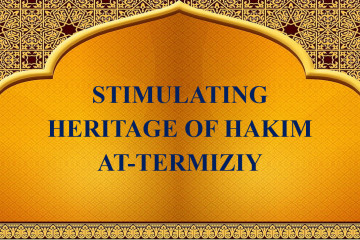
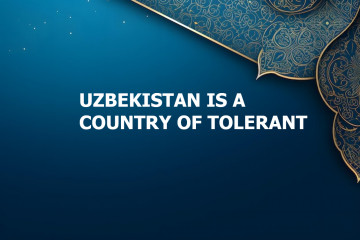
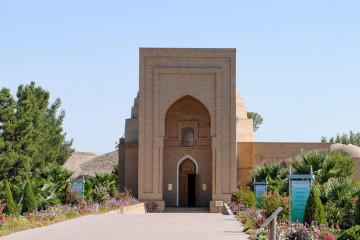
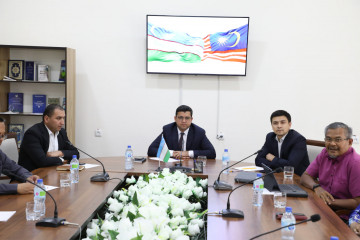
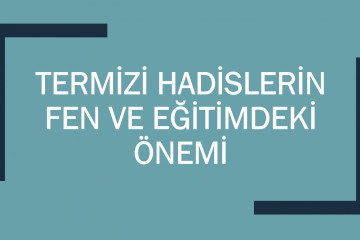

Оставить комментарий